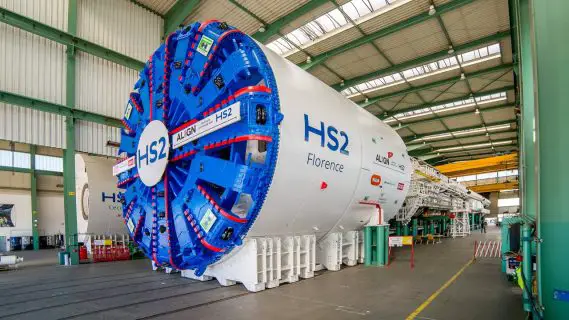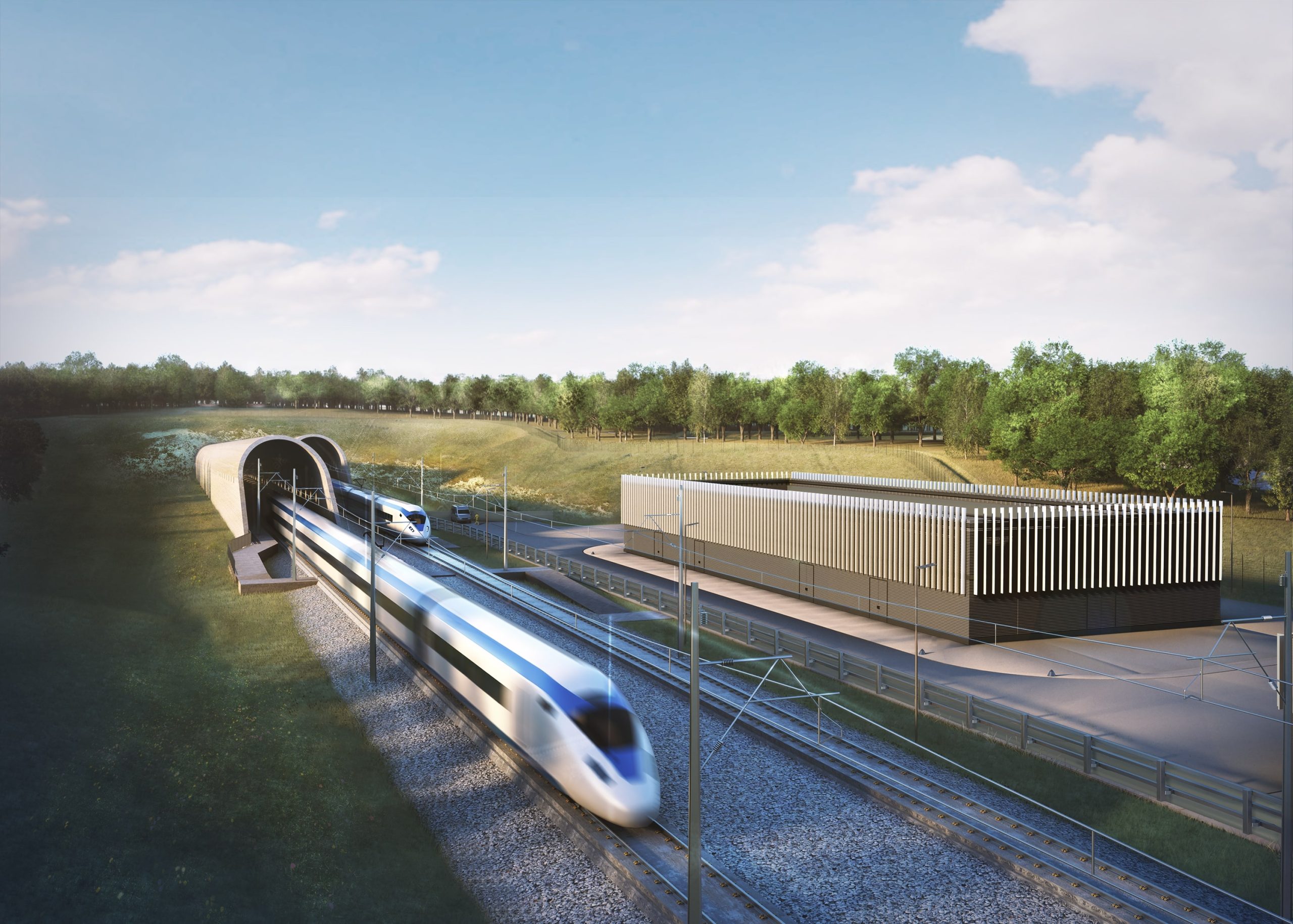The tunnelling works of the Chiltern Hills twin-bore tunnel, the longest of its kind on the 190-kilometre High-Speed 2 (HS2) Rail System at a length of 16 kilometres, have been completed. The completion of the tunnel came following the breakthrough of the second giant boring machine (TBM) “Cecilia” at the tunnel’s northern portal on 20th March 2024.
Cecilia completed her journey that began in June 2021 approximately 3 weeks after her twin sister machine “Florence” had completed hers at the site near the Buckinghamshire town of Wendover on 27 February 2024.
The two 2,000-tonne machines have built the twin-bore tunnel at depths of up to 80 meters excavating about three million cubic meters of chalk. Each machine was able to excavate the tunnels and line them with approximately 56,000 pre-cast concrete tunnel segments, grouting them into place and moving forward at an average speed of 16 meters per day.
Both machines launched from the Chiltern tunnel’s south portal near the M25 motorway in June 2021. They were operated by HS2’s main works contractor Align, a joint venture between Bouygues Travaux Publics, Sir Robert McAlpine, and VolkerFitzpatrick.

Remarks on the completion of tunnelling works of Chiltern Hills twin-bore tunnel
Speaking on this milestone, HS2 Ltd.’s head of civil works for this section of the route, Mark Clapp, explained it as a remarkable achievement for all who are concerned.
“Cecelia’s arrival completes excavation of HS2’s 10-mile Chiltern twin-bore tunnel. However, this is only the end of the first chapter in the story of building Britain’s high-speed railway under the Chiltern Hills as several years of intensive, world-class engineering lies ahead of us.
We need to complete the tunnels’ four ventilation shafts plus headhouses as well as carry out mechanical, electrical plant and machinery works, and slab track and overhead electrical wires before trains can begin passing through the tunnel.”
Align’s Underground Construction Director, Didier Jacques on the other hand said that 10 miles is a long drive for a TBM, keeping in mind that a typical TBM only does an average of approximately three miles. The complexity and technical challenges of completing such a long drive for both Cecelia and Florence according to Jacques had been significant, but he was delighted that as a team, they rose to the challenge.
About Cecelia and Florence TBMs

The two TBMs involved in the tunnelling of the High-Speed 2 (HS2) longest tunnel were made in Germany by TBM specialists Herrenknecht. Herrenknecht is a German company headquartered in Allmannsweier, Schwanau, Baden-Württemberg. The company is the worldwide market leader for heavy tunnel boring machines.
According to Jacques, both TBMs incorporate innovations and technologies that have been introduced on TBMs in the UK for the first time, to enhance performance and safety. These innovations and technologies, Align’s Underground Construction Director explained, include ‘semi-continuous boring’ that allows the TBMs to build the rings that line the tunnels without pausing.
Each TBM is operated by a crew of around 17 people, working in shifts to keep the machines running around the clock. The 17 are supported by over 100 people on the surface, managing the logistics and maintaining the smooth progress of the tunnelling operation.
In total over 450 people worked on the Chiltern Hills twin-bore tunnel over the last three years. These people included a dedicated production team that made 112,000 precision-engineered, fibre-reinforced concrete tunnel wall segments on-site at a purpose-built temporary factory – and a team processing the spoil from the tunnels.
Also Read
HS2 Engineers Complete UK’s Heaviest Bridge Installation
High-Speed 2 (HS2 ) Rail, the largest infrastructure project in Europe
DfT approves construction of high speed railway in London, England

